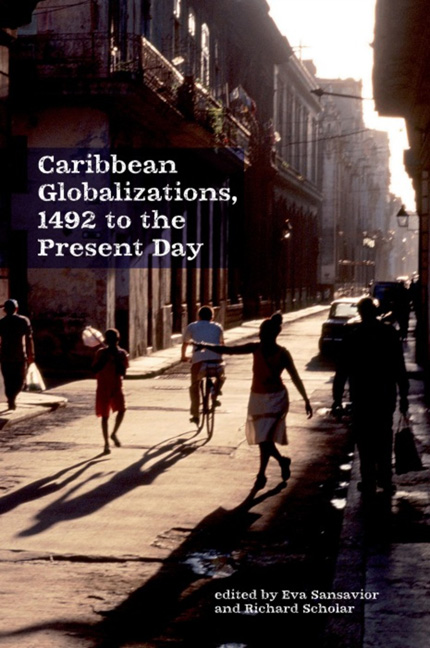Book contents
- Frontmatter
- Contents
- Contributors
- Prologue: Globalization, Globality, Globe-Stone
- Introduction
- I Globalizations in the Making
- II The Complex Present
- 6 Tobacco: The Commodification of the Caribbean and the Origins of Globalization
- 7 The Amaranth Paradigm: Amerindian Indigenous Glocality in the Caribbean
- 8 Aluminium: Globalizing Caribbean Mobilities, Caribbeanizing Global Mobilities
- 9 Race and Modernity in Hispaniola: Tropical Matters and Development Perspectives
- 10 Local, National, Regional, Global: Glissant and the Postcolonial Manifesto
- 11 Tropical Apocalypse: Globalization and the Caribbean End Times
- Acknowledgements
- Index
7 - The Amaranth Paradigm: Amerindian Indigenous Glocality in the Caribbean
from II - The Complex Present
- Frontmatter
- Contents
- Contributors
- Prologue: Globalization, Globality, Globe-Stone
- Introduction
- I Globalizations in the Making
- II The Complex Present
- 6 Tobacco: The Commodification of the Caribbean and the Origins of Globalization
- 7 The Amaranth Paradigm: Amerindian Indigenous Glocality in the Caribbean
- 8 Aluminium: Globalizing Caribbean Mobilities, Caribbeanizing Global Mobilities
- 9 Race and Modernity in Hispaniola: Tropical Matters and Development Perspectives
- 10 Local, National, Regional, Global: Glissant and the Postcolonial Manifesto
- 11 Tropical Apocalypse: Globalization and the Caribbean End Times
- Acknowledgements
- Index
Summary
To Jan Carew 24
September 1920–6 December 2012
In 1979, more than thirty years ago, a project was initiated by the Caribbean Society for Culture and Science in the St Paul's and Mardi Gras area and later in the Westerhall and Bacolet regions of Grenada in the Caribbean. Jan Carew, of Guyanese origin, was instrumental in launching the project and defining its scope and ethos. It was entitled ‘The Reconstruction of Tropical Civilizations: The Bacolet Experiment’, and was eventually referred to as ‘The Bacolet Experiment’. The original papers that describe it can be read at the Library of the University of Louisville, Kentucky, where Jan Carew lived for more than ten years until his death in 2012. The project was organized around the reintroduction of indigenous crops that belonged to the pre-Columbian era.
Amaranth was the main crop, and the star of the project. In the Aztec and Inca pre-Columbian worlds, it used to be as important as corn and beans, and was the staple of the greatest part of the populations of Central and South America, and of the Caribbean basin.
Amaranth is a broad-leafed plant which can be consumed as a vegetable for its leaves, but also produces cereal-like grain, just like quinoa or buckwheat. There are some sixty or seventy different species, all belonging to the same genus, Amaranthus. They are extremely vigorous, resistent to drought and all kinds of pests; they adapt quickly to difficult soils and yield rapidly abundant crops. Another feature that makes amaranth attractive is its high-protein content: 16 per cent, which places it above rye (13 per cent), oats (12 per cent), barley (10 per cent), wheat (10 per cent), corn (10 per cent), and rice (7 per cent). In spite of its many qualities, its importance has long been overshadowed by the large grains (wheat, corn, and rice). Only in the past three decades has amaranth received the scientists’ attention and moved away from its reputation as a primitive crop, or even as a weed, more despised than praised (see the old adage ‘it is not worth an amaranth’). It is now to be found in organic food shops and lends its name to trendy restaurants across the world.
- Type
- Chapter
- Information
- Caribbean Globalizations, 1492 to the Present Day , pp. 173 - 188Publisher: Liverpool University PressPrint publication year: 2015



